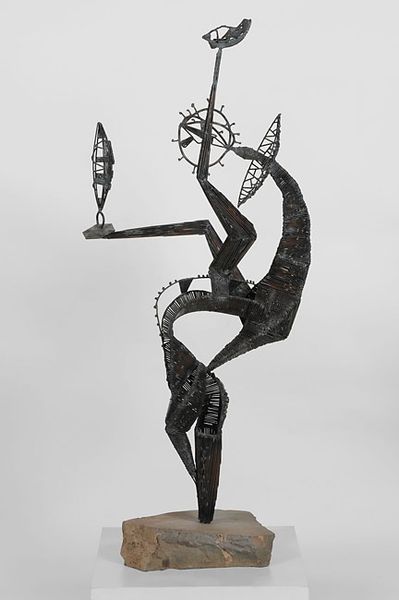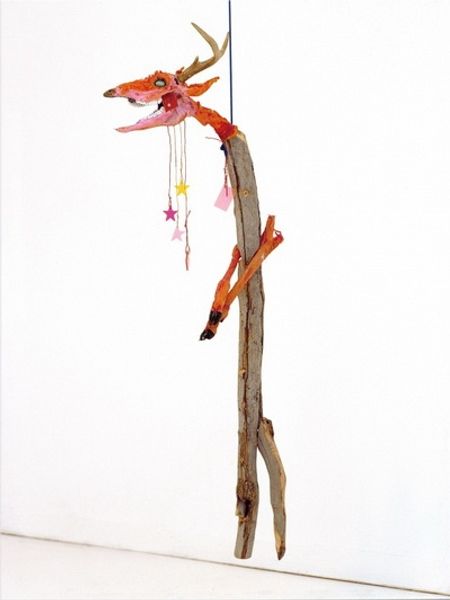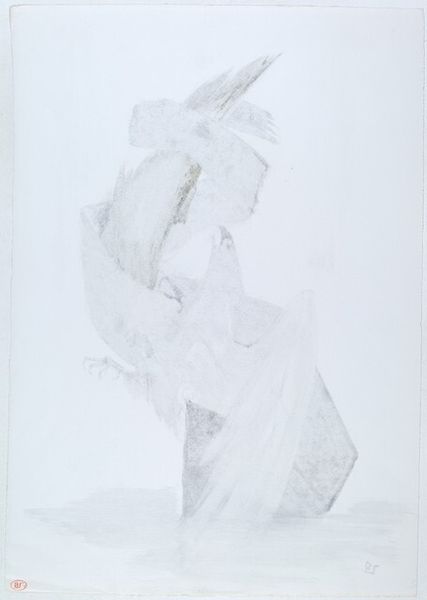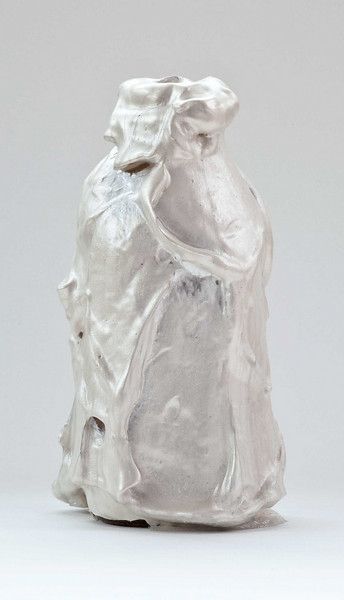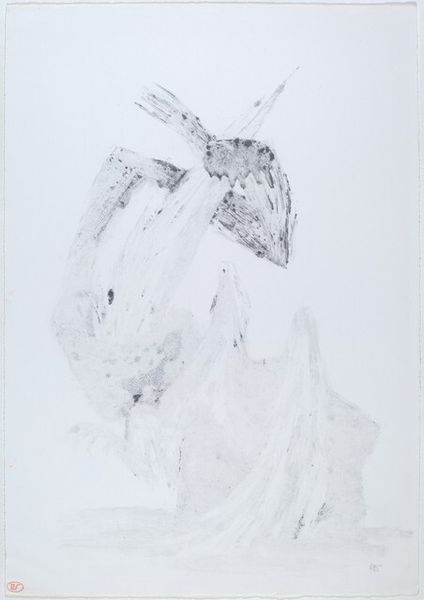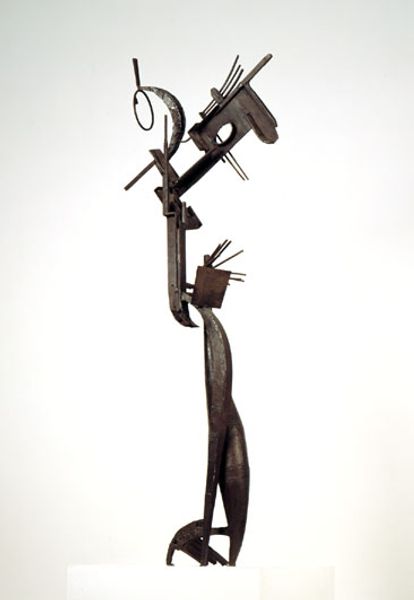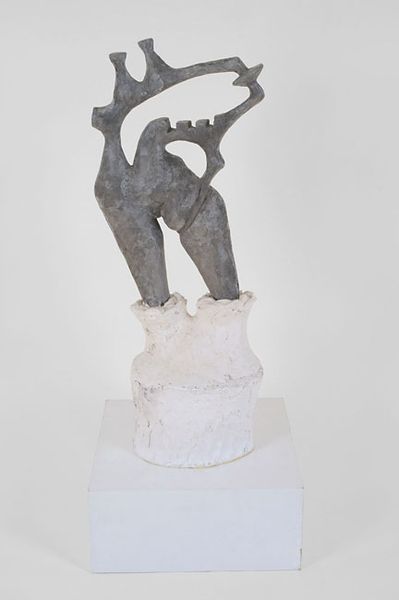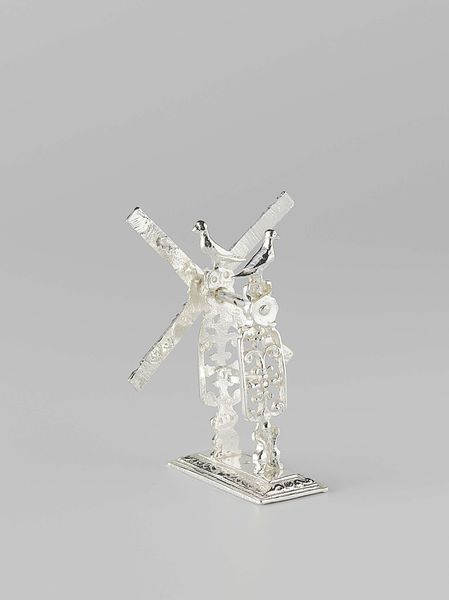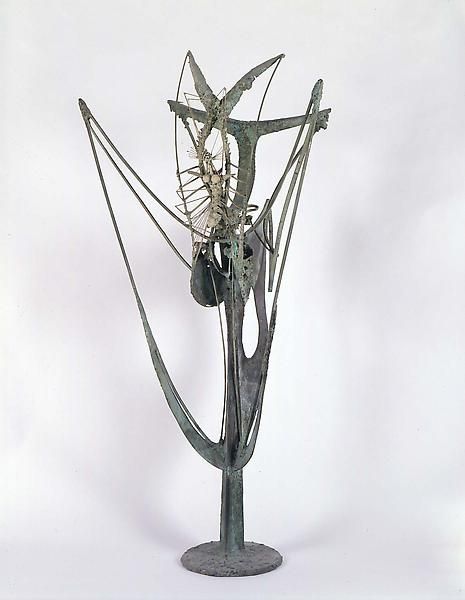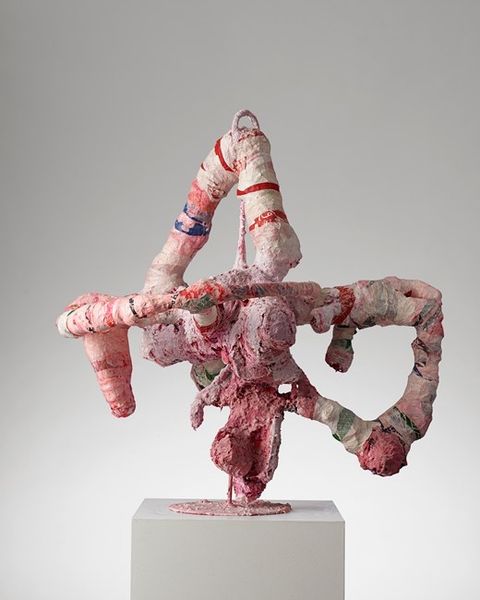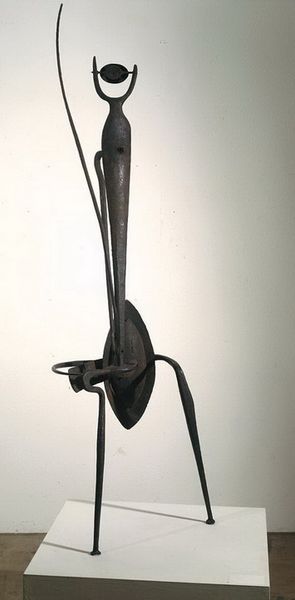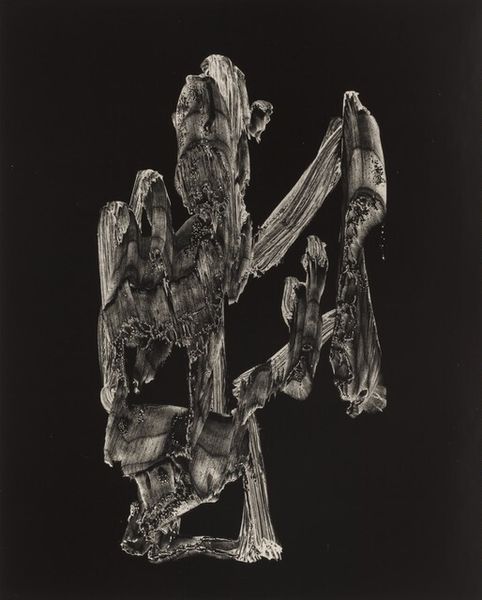
Dimensions: object: 530 x 280 x 130 mm
Copyright: © Succession Miro/ADAGP, Paris and DACS, London 2014 | CC-BY-NC-ND 4.0 DEED, Photo: Tate
Editor: So, this is Joan Miró's "The Tightrope Walker," a small sculpture at the Tate Modern. It's quite quirky. What strikes me is the figure's precarious balance, and I wonder how Miró intended us to read the symbols he employed. What do you see in this piece? Curator: The symbols in Miró, like those in dreams, often draw upon collective unconsciousness. The figure, seemingly composed of disparate found objects, evokes the human condition—vulnerable, striving. Note the grid at its center. Does this represent the self under scrutiny? Editor: That's an interesting point. I hadn't considered the grid as representing a kind of self-analysis or vulnerability. Curator: Consider the elongated arms culminating in abstracted forms. What feelings or deeper ideas do they communicate? Are they aspirations reaching for something beyond? Editor: I think I see it now. It’s less about the tightrope and more about the striving, the balancing act of life itself. Thank you.
Comments
tatemodern 8 months ago
⋮
http://www.tate.org.uk/art/artworks/miro-the-tightrope-walker-t03402
Join the conversation
Join millions of artists and users on Artera today and experience the ultimate creative platform.
tatemodern 8 months ago
⋮
Miró often used discarded materials, some of them discovered in the foundry. His aim was to create what he called an ‘unlikely marriage of recognisable forms’. The body of the tightrope walker is made from a child's doll, cast into bronze. The base on which it rests is the cone through which the bronze was poured, while the nails originally held the mould together. The mottled and textured surface results from acid deposits left by the casting process. Each of these elements has an expressive role within the sculpture which, like much of Miró's work, combines humour with suggestions of violence. Gallery label, July 2013
